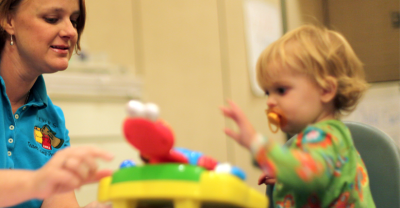Cerebral palsy is a birth injury that affects many children, and while some signs of the neurological disorder can be detected shortly after birth, it is often diagnosed between the ages of one and three.
As the child grows, the signs and symptoms become more obvious and easier to detect. It’s important to remember that the earlier the condition is diagnosed, the easier it is for medical professionals to provide effective treatment.
The Effects of Cerebral Palsy on Toddlers and Young Children
Fortunately, cerebral palsy is not progressive. What this means is that even though the brain damage that causes Cerebral Palsy is permanent, the symptoms don’t worsen as they grow older. With proper treatment, some of these symptoms will actually improve over time.
Cerebral palsy can be mild or severe, and the level of severity usually depends on the extent of the brain injury. Because Cerebral Palsy primarily affects muscle control, movement and balance, the effects of this disorder may not be fully realized until the child reaches certain developmental milestones (e.g., the inability to walk by the age of 18 months or utter simple sentences by the age of 24 months).
Because cerebral palsy mainly affects muscle tone and motor skills, the child may exhibit hearing, speech and vision problems, issues with bladder control, or problems with the facial and mouth muscles that cause excessive drooling or difficulty eating and swallowing.
Signs & Symptoms of Cerebral Palsy at 18 Months Old
While there are a variety of symptoms parents may notice with young children that may make them suspect something is wrong, a child past the age of 1 who is unable to crawl and lacks the ability to stand with support may be exhibiting early signs of a neurological disorder such as cerebral palsy.
While it is quite possible these issues are just developmental delays rather than a brain injury, it’s important to allow the child’s medical provider to make the diagnosis. This usually occurs as a result of observations and certain medical examinations, such as:
- Developmental monitoring. During this stage, the medical professional checks the baby’s growth and development over a specific period of time. If there are signs the baby may have Cerebral Palsy, the next step is developmental screening.
- Developmental Screening. Medical professionals conduct a series of tests that assess any developmental delays such as problems related to the child’s movement. These tests should be conducted at 9 months, 18 months, and 24 or 30 months.
- Developmental and medical evaluations. When there are abnormal screening tests, it is necessary to conduct developmental and medical evaluations, including lab work, brain scans, and neuroimaging.
In addition to the screening and medical evaluations, your child’s physician may also recommend some other tests such as the following:
- Blood work
- CT scan
- Electroencephalogram (EEG)
- Magnetic resonance imaging (MRI)
- Ultrasound
While there is no cure for cerebral palsy, it is important to seek out a treatment plan as soon as possible. The earlier you begin treatment for your child, the more successful it’s likely to be. Certain types of treatments can be quite expensive, but if your child’s injuries were the result of medical malpractice, your family may be owed compensation to pay for such expenses.
If you would like to discuss the facts of your case with a cerebral palsy attorney to learn the options available to you and your family, call us today at 1-855-833-3707 for a free consultation.

